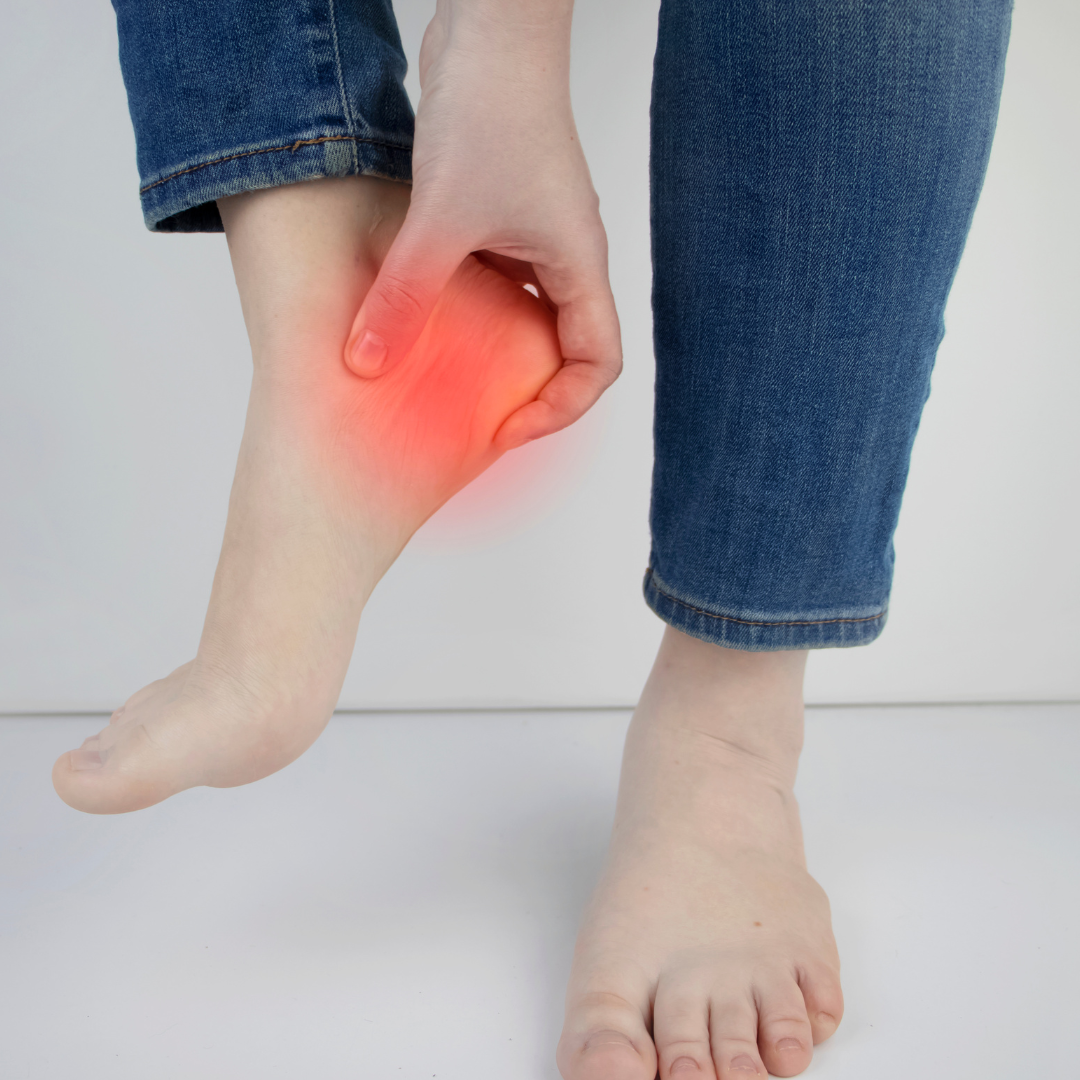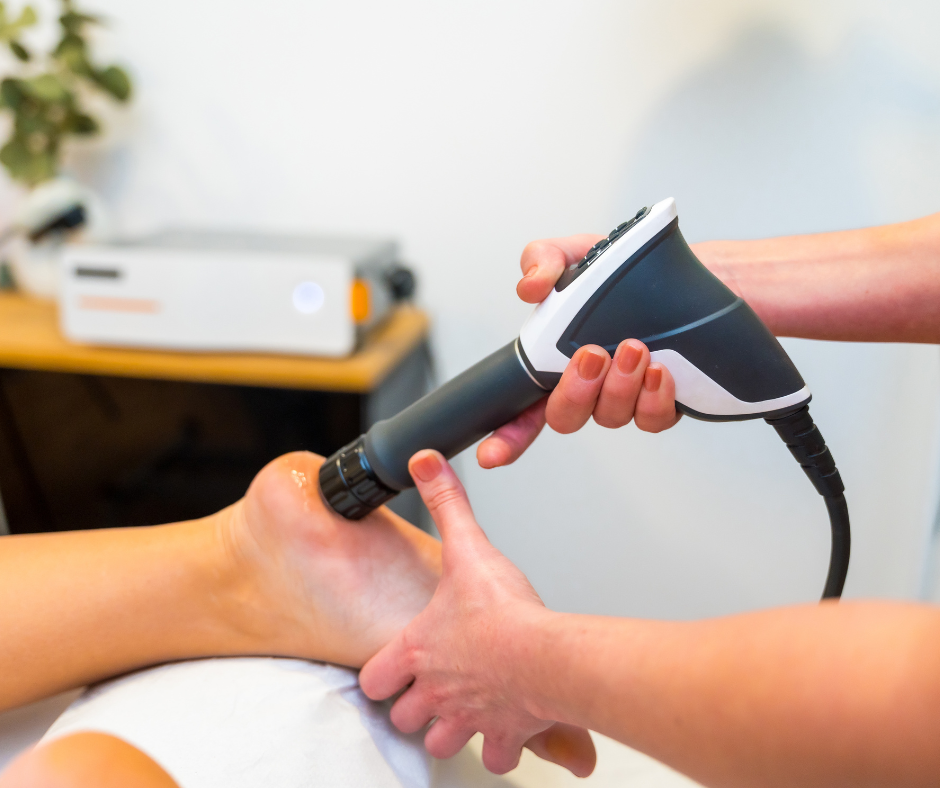-
ESWT Shockwave Therapy Offers a New Approach
Chronic heel pain can make everyday activities like walking and standing unbearable, and while traditional treatments like stretching, orthotics, or injections might provide some relief, they can sometimes fall short.
Enter ESWT (Extracorporeal Shock Wave Therapy), a non-invasive alternative that’s changing the game for heel pain sufferers! Kentlands Foot & Ankle Center is always at the forefront of innovative, non-invasive options, and for this blog post, we’re going to cover all the ins and outs of this exciting option, including why it might be the right choice for you.
The Limitations of Traditional Approaches
Traditional treatments for heel pain, such as physical therapy and the use of orthotics, can be helpful in the initial stages.
- However, they often provide only temporary relief and may not address the underlying cause of the pain.
- In some cases, these treatments can be time-consuming, require a long recovery period, or have unwanted side effects.
ESWT: A Non-Invasive Solution
ESWT is a treatment that utilizes pressure waves to stimulate healing and reduce pain and inflammation. Unlike traditional surgery, ESWT doesn’t involve incisions, anesthesia, or a lengthy recovery period. It also boasts high success rates that are clinically verified.
How ESWT Works
ESWT targets the affected tissue with high-energy pressure waves, stimulating a healing response and promoting tissue regeneration.
- This can be particularly effective for conditions like plantar fasciitis, where the plantar fascia, the thick band of tissue along the bottom of the foot, becomes inflamed.
Shockwave Therapy vs. Traditional Surgery
- No Cutting: ESWT avoids the need for incisions, reducing the risk of complications associated with surgery.
- Faster Healing: Recovery from ESWT is significantly faster. For example, traditional heel spur surgery might require between six weeks and three months for a full recovery.
- Reduced Risk: ESWT eliminates the risk of permanent nerve or joint damage associated with some surgical procedures.
- Minimal Downtime: Patients can typically return to work and daily activities much sooner after ESWT compared to surgery.
- Less Pain: ESWT generally involves less post-treatment pain than traditional surgery.
Aching and unsure options? Consult with your podiatrist to see if ESWT is right for you!
Interested in learning more? We’re always happy to help! Schedule a comprehensive foot examination with Kentlands Foot and Ankle Center podiatrist Dr. Jon M. Sherman. To make your appointment, please call our office at 301-825-9697.
-
Good News for People with Chronic Heel Pain!

A twitch of pain somewhere in your foot is one thing – brief and tolerable. Thank goodness it goes away.
Heel pain that doesn’t go away is an entirely different matter. We’re talking about the heel pain that greets you like a knife when you step out of bed every morning. The kind of intense pain that makes you cry out, perhaps with a few choice words you didn’t mean to say. This kind of pain requires attention from Kentlands Foot and Ankle Center’s board-certified podiatrist, Dr. Jon M. Sherman, because it’s not likely to get better on its own.
Plantar fasciitis, explained!
The medical term for chronic heel pain is plantar fasciitis. Any medical word with the suffix “-itis” means “inflammation.” In this case, it’s the plantar fascia that’s inflamed. The plantar fascia is a large, thick ligament that runs along the bottom of your foot, connecting the calcaneus (heel bone) to your toes. It’s easily inflamed under some circumstances:
- You have a job that requires you to be on your feet for much of the day, such as a waiter, nurse, or urban mail carrier.
- You’re a runner or walker who’s recently increased their mileage, pace, or distance.
- You participate in other athletic activities, such as ballet, that put a lot of stress on your feet.
- You’re carrying some extra pounds, which puts undue stress on your feet.
- You have pre-existing issues with your foot anatomy, such as flatfoot or high arches.
- You’re over 40: The older you are, the more likely you will develop plantar fasciitis.
The pain you don’t have to live with
Fortunately, we have many effective treatments that soothe the pain of plantar fasciitis. Dr. Sherman will likely start with conservative approaches, including taking a break from any activity that hurts, performing stretching exercises, icing, taking anti-inflammatory medications, wearing custom orthotics, and getting steroid injections. Often, the best treatment involves a combination of all these.
Other treatment options include non-invasive shockwave therapy (ESWT, laser light therapy/cold laser, and physical therapy. Surgery for plantar fasciitis is a possibility but not a common one.
The key to successful plantar fasciitis treatment is getting it promptly. Don’t wait. We encourage residents of Montgomery County to consult Dr. Sherman sooner rather than later for a full examination and assessment of their heel pain. Call 301-330-5666 or contact us online for an appointment at our Gaithersburg podiatry office.
RECENT POSTS
categories
- Uncategorized
- Featured Articles
- Foot Disorders
- Broken Ankle
- Broken Toe
- Fracture
- Foot Health
- Foot Care
- Arthritis
- Foot Pain
- Skin Cancer
- Podiatry Appointment
- Custom Orthotics
- Podiatrist
- Diabetes
- Gout
- Heart Health
- National Nutrition Month
- National Foot Health Awareness Month
- Foot Safety
- Foot and Ankle Injuries
- Falls Prevention
- Chronic Heel Pain
- Shoes
- Laser Therapy
- Quoted
- Physical Therapy
- KeryFlex
- Sweat
- Summer Foot Care
- Sports Injury
- ESWT
- Fungal Toenails



